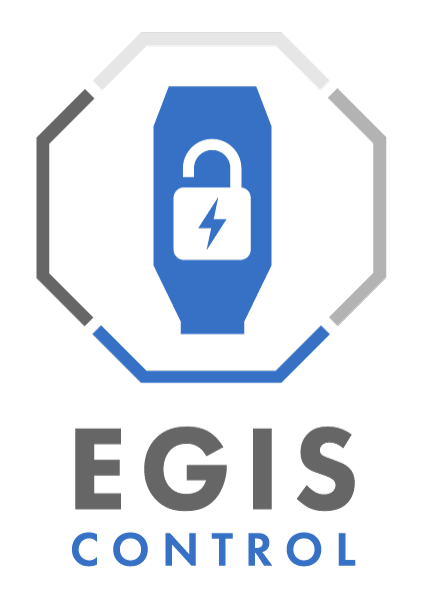The Best TV Time Limit Device for Managing Screen Time Effectively
Control is the locking smart plug that gives parents the ability to control their children's screen time across a variety of devices – conveniently through one app.
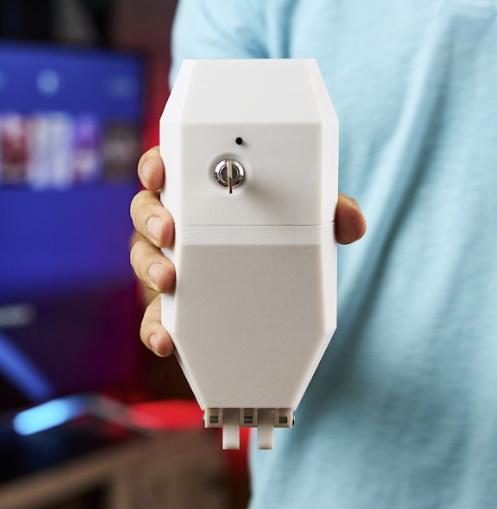
Egis Control
Parental Control Locking Smart Plug



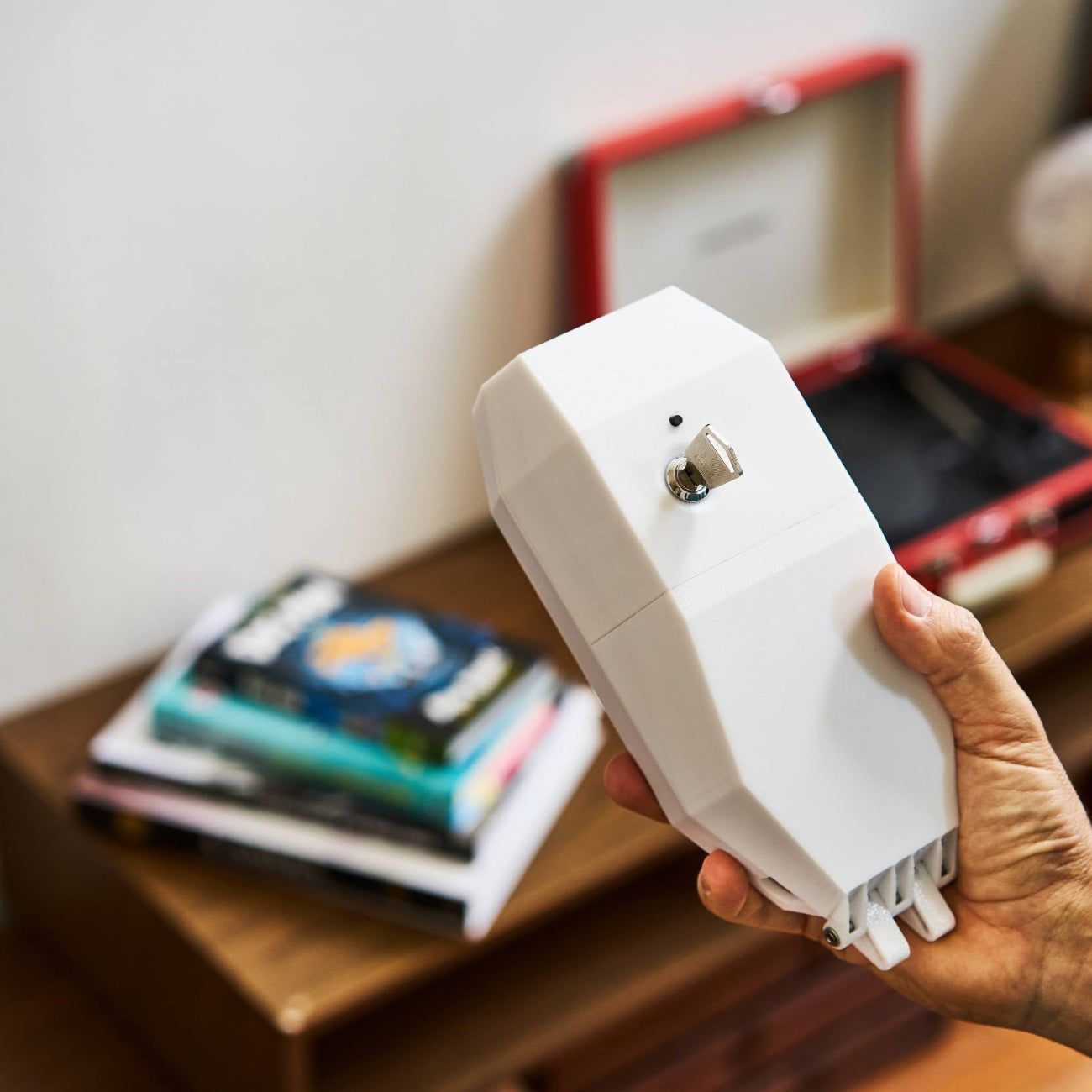
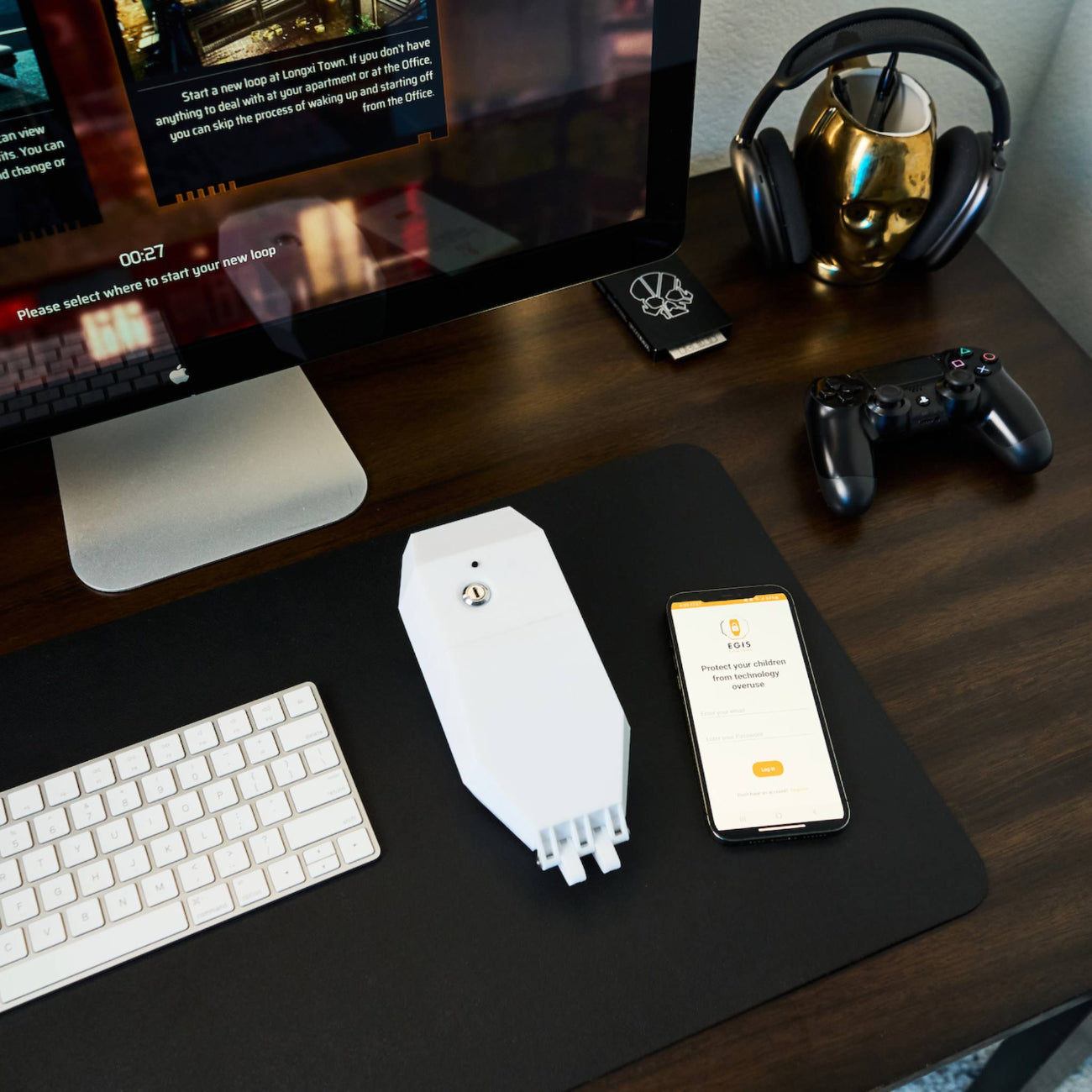
Brittany H, Mother of 1
Egis Control has been a huge help! My son used to wake up before me just to go watch YouTube on our TV in the living room, but now that is a thing of the past.
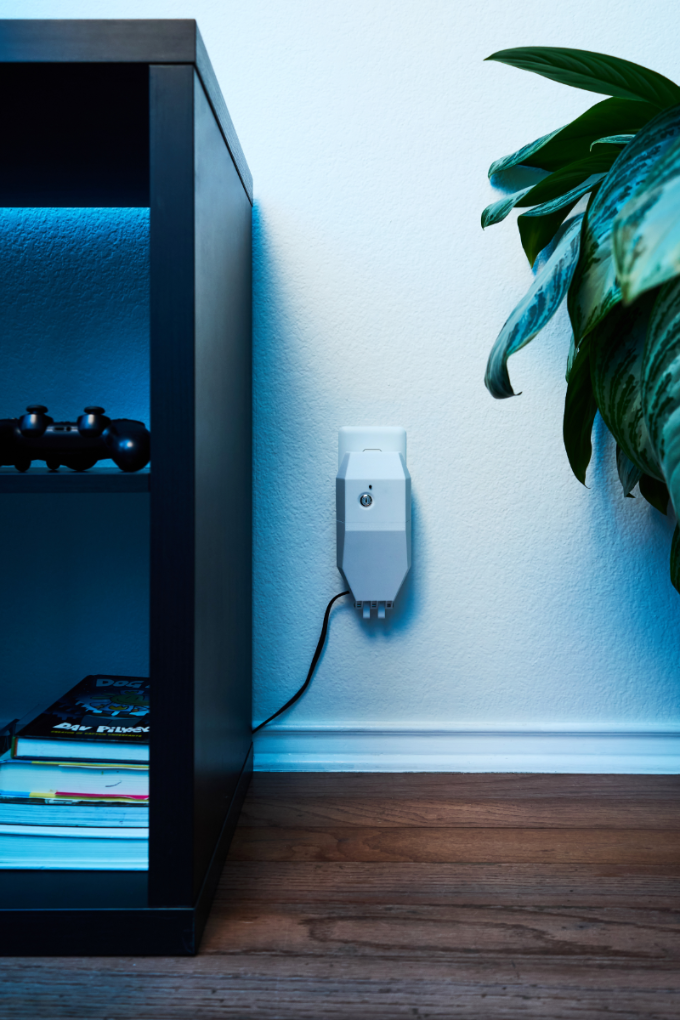
Letting kids be kids and parents be partners
Control is a patented locking smart plug that gives parents the ability to control their children's screen time across a variety of devices – conveniently through one app.
- Dual device support. Easily connect up to two devices to the Control plug, whether it’s a PlayStation, XBox, a gaming PC, or even a TV
- Easy scheduling. Use the Control app to easily set up a screen time schedule that works best for you and your family.
- Screen Time Management. Set a total time allotment for how many hours your child can spend playing video games each period (monthly, weekly, or daily) within the times you have scheduled.
- Secure and smart locking. Cords cannot be removed until you unlock them via the app.
- Automatic power down. After providing a customizable alert before power down, if the device is not shut off manually, Control will automatically power down the plugged-in devices at the appropriate time.
The Best TV Time Limit Device for Managing Screen Time Effectively
Understanding Screen Time Limits
Screen time limits are an essential tool for parents to manage how much time their child spends on devices and ensure a healthy balance between screen time and other activities. Setting screen time limits can help parents control the amount of time their child spends on devices, apps, and games, and can also help to prevent excessive screen time, which can lead to a range of negative effects, including sleep deprivation, eye strain, and decreased physical activity.
When setting screen time limits, parents should consider the age and individual needs of their child, as well as the type of device or app being used. For example, younger children may require more restrictive limits, while older children may be able to manage their screen time more independently. Parents should also consider setting limits on specific apps or games, as well as setting daily or weekly limits on overall screen time.
Managing Your Child’s Screen Time
In today’s digital world, managing your child’s screen time is more important than ever. Using parental control tools, you can set limits on your child's device to ensure they are not spending too much time on screens. With tablets, smartphones, and computers playing a growing role in both education and entertainment, finding a healthy balance is essential. This guide explores practical strategies for setting limits, encouraging offline activities, and promoting mindful screen use to support your child’s development and well-being.
Clear Rules
Establishing clear rules around screen time helps set clear rules and creates consistency at home. Define when and where screens can be used—for example, no devices at the dinner table or during bedtime. When kids understand the boundaries, it’s easier for them to develop healthy digital habits and reduce arguments about when and how they can use their devices.
Preventing Excessive Screen Time
Too much screen time can impact sleep, mood, and physical health. Setting a daily limit on screen time can help prevent overuse and ensure a balanced routine. To prevent overuse, introduce tech-free zones and hours throughout the day. Using timers, parental controls, or screen monitoring tools can also help you keep tabs on usage and support balanced routines. The goal isn’t to eliminate screens, but to ensure they’re not taking over daily life.
Encourage Physical Activity
Balancing screen time with physical activity is key to your child’s well-being, ensuring they are spending time on a variety of activities. Encourage regular breaks from screens by planning outdoor play, sports, or even simple walks. When physical activity becomes a daily habit, it naturally reduces time spent in front of a screen and supports a healthier, more active lifestyle.
Monitor Activity
Keeping an eye on what your child is watching, playing, or interacting with online is just as important as limiting time. In addition to monitoring screen time, social media monitoring can help you stay aware of your child's interactions on platforms like Facebook and Instagram. Use parental controls, review apps and websites together, and talk openly about digital content. Monitoring isn’t about spying—it’s about staying involved and guiding your child toward safe, age-appropriate experiences.
Specific Time Limits
Setting specific time limits for screen use creates structure and accountability. Setting app limits can help manage how much time is spent on specific applications, ensuring a balanced use of screen time. Whether it’s 30 minutes of gaming after homework or an hour of TV on weekends, clear timeframes help kids manage their expectations. Consistent limits not only prevent excessive use but also encourage time management and prioritize other important activities.
Choosing the TV Time Limit Device
When it comes to managing screen time effectively, the right TV time limit device can make a big difference. These tools can also block access to certain channels or apps, ensuring your child only watches age-appropriate content. These tools help parents set automatic limits on how long their child can watch TV each day—eliminating daily negotiations and encouraging healthier viewing habits. When choosing a device, look for features like customizable timers, child-friendly controls, and compatibility with your existing setup. Some models even offer remote management and activity reports, giving you greater insight and control. The best device is one that fits your household routine and makes screen time management simpler and more consistent.
What To Look For In A TV Time Limit Device
|
Feature |
Why It Matters |
What to Look For |
|---|---|---|
|
Custom Time Settings |
Lets you set daily or weekly viewing limits based on your child’s routine. |
Adjustable time blocks, multiple user profiles. |
|
Ease of Use |
A simple setup ensures you’ll actually use it consistently. |
Plug-and-play design, clear instructions, user-friendly apps. |
|
Child Access Control |
Prevents kids from bypassing or resetting limits. |
Password protection, tamper-proof hardware. |
|
Activity Tracking |
Helps you monitor usage and identify habits. |
Daily logs, usage summaries, or companion apps. |
|
Device Compatibility |
Ensures it works with your TV or streaming setup. |
HDMI compatibility, smart TV support, universal control. |
|
Remote Access |
Allows you to adjust limits or pause screen time from your phone. |
Mobile app or web-based control features. |
|
Durability & Safety |
Built to last and safe to use around children. |
Certified for safety, high-quality materials. |
When choosing a device, look for key features like customizable time limits, child-friendly controls, and compatibility with your existing setup.
TV Time Limit Devices
Egis Control
The only smart device that works across all brands and devices that it is connected to with an easy to use app. Allows you to set schedules and time limits across a variety of devices.
BOB Screen Time Manager
A device built in 2008 that allows parents to set daily or weekly TV time limits for their children. It requires manual interaction as it does not connect with phones or other devices. It connects directly to the TV and requires a passcode to manage settings, ensuring kids can't override the limits.
Google Family Link
A free app that enables parents to set screen time limits, monitor app usage, and approve or block apps on their child’s Android devices. You can set individual screen time limits for each family member, ensuring personalized control over device usage. While primarily for mobile devices, it can help manage overall screen time habits.
Microsoft Family Safety
This app allows parents to set screen time limits across Windows and Xbox devices, providing reports on usage and the ability to set content filters. This app allows you to manage screen time for the entire family group, providing a comprehensive solution for all members. It’s ideal for families using Microsoft products.
Apple Screen Time
Built into iOS devices, this feature lets parents set daily limits on specific apps or categories, schedule downtime, and monitor overall screen time. It's useful for managing screen time across iPhones, iPads, and Apple TVs.
TV Time Limit Device Comparison
|
|
Easy To Use App |
Works Across Multiple Brands |
Works Across Multiple Devices |
High Security Design |
|
Egis Control |
Yes |
Yes |
Yes |
Yes |
|
BOB Screen Time Manager |
No |
Yes |
Yes |
No |
|
Google Family Link |
Yes |
No |
No |
N/A |
|
Microsoft Family Safety |
Yes |
No |
No |
N/A |
|
Apple Screen Time |
Yes |
No |
No |
N/A |
Parental Controls for a Healthier Family
Parental controls are essential tools to limit screen time and create a healthier digital environment at home. They allow you to manage what your child sees, how long they use devices, and when screens are accessible—all while promoting responsible tech use. From smart TVs and gaming consoles to tablets and smartphones, most modern devices offer built-in settings to help you filter content, block harmful websites, and set time limits. By taking advantage of these controls, you can reduce exposure to inappropriate material, encourage age-appropriate learning, and support better screen time habits. When used consistently, parental controls become part of a larger strategy to guide your child’s digital behavior and create a more balanced, connected family life.
Choosing the Right Parental Control Solution
With so many parental control options available, finding the right one to set limits for your family can feel overwhelming. The key is to choose a solution that aligns with your child’s age, your household’s devices, and your parenting goals. Start by identifying which platforms your child uses most—like smart TVs, tablets, phones, or gaming consoles—and look for tools that work across those devices. Consider whether you need features like app blocking, content filtering, screen time scheduling, or real-time activity alerts. Some families prefer all-in-one apps, while others opt for a mix of built-in settings and third-party software. The best solution is one that’s easy to use, flexible as your child grows, and helps you stay involved without constantly hovering.
Security Features to Protect Your Family
Beyond screen time and content filters, digital safety starts with strong security features. Excessive screen time has raised concerns among experts about its effects on children and adults, making robust security features even more important. The right parental control tools should also help protect your family’s privacy, data, and online activity. Look for features like secure browsing, automatic malware blocking, location tracking, and safe search filters. Many apps also offer alerts for suspicious behavior, unauthorized logins, or attempts to disable controls. Two-factor authentication (2FA) and password-protected settings add another layer of defense, making it harder for kids—or outsiders—to bypass restrictions. A good security setup ensures your child stays safe not only from inappropriate content, but also from online threats like scams, hackers, and identity theft. By choosing tools with robust security features, you’re helping create a safer digital space for your entire family.
Frequently Asked Questions
Does This Work On Any Video Game System?
Yes. The Egis Control manages the power to any TV, or other device, that is plugged into it. This ensures the devices are powered off when they should.
How many devices can I plug in?
The Egis Control has room for 2 devices to be plugged in.
Is there a subscription to use Egis Control?
No! There is no subscription for the Egis Control.
